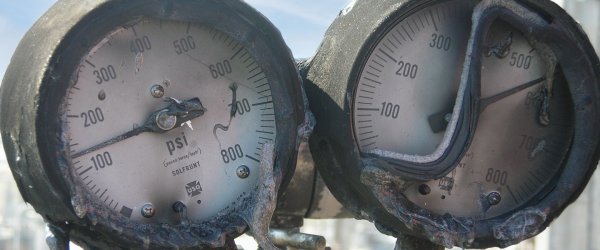Improved Models for Life Assessment, Inspections, and Repair-Replace Decisions
Within the refinery and chemicals industries, high temperature hydrogen attack (HTHA) continues to be a process-safety issue. Stress Engineering Services (SES) has observed a growing industry need for HTHA damage assessments for asset prioritization and capital planning, and has developed two new HTHA damage life assessment methods. These methods were developed using laboratory and failure data published in API 941 and have been validated against other published data.
High-Temperature Hydrogen Attack Life Assessment Methodology
An HTHA life assessment should provide guidance for classifying the likelihood of an HTHA-related failure per the owner or user’s process safety management (PSM) risk matrix. SES’ approach is based on “landmarking” HTHA concerns into our clients’ risk management decision-making framework, so that informed decisions can be made regarding equipment inspection and replacement schedules.
The SES Assessment Method:
- Is based on published science and API RP 941 failure data
- Uses theoretical damage rate equations that are empirically fit
- Is validated to be predictive against newly-reported failures
- Is capable of assessing the significance of non-steady state operating conditions
- Provides an improved technical basis for repair/replace decision and is capable of reproducing Nelson Curve plots for a given design life
HTHA Screening Method – The HTHA Screening Method uses the time in service, pressure, temperature, and hydrogen partial pressure to calculate the accumulated HTHA damage relative to the reported failures for a specific metallurgy. This method uses a simplified approach to understand the relative damage in the asset, and plots that asset’s service history versus the API 941 failure population for each alloy. This methane-based model provides excellent correlation between laboratory and field- failure data.
HTHA Combined Damage Method –The HTHA Combined Damage Method considers operating history and stress along with material properties (including in-service degradation) to estimate the rate of HTHA damage accumulation. The combined method uses through-wall gradients for hydrogen, temperature and stress to develop HTHA damage rates and crack growth predictions. These damage predictions are compared to detection thresholds using various NDE techniques to identify safe inspection intervals.
Both of these methods can be used to estimate the probability of an HTHA failure as indicated by the industry-published failure population. This allows the product of SES’ HTHA damage assessment to be understood within our clients’ PSM requirements.
Inspection Planning Considerations
For inspection planning purposes, the HTHA Combined Damage Method accounts for the following:
- An effective time to initiate damage or a time to incipient damage.
- Actual stress state and operating conditions for a particular component.
- Damage progression estimates that provide upper- and lower-bounds based on crack growth predictions.
Stress Engineering Services has developed high-temperature hydrogen attack methods to improve:
- Understanding of the failure risk of continued operation
- Inspection planning
- Repair and/or replacement planning
For carbon steel, C-0.50Mo steel, and low-alloy steels, we offer services that help our clients understand their HTHA risks, plan inspections, and make sound operations decisions based on the best-available techniques and data.
Additional Information:













